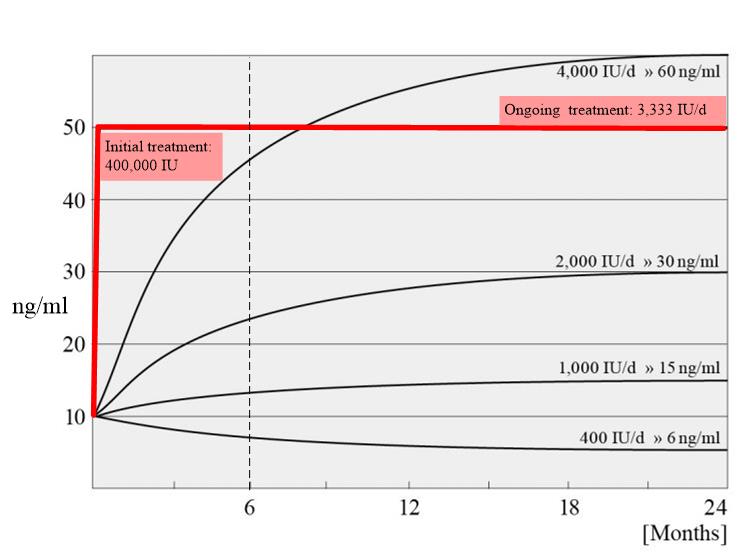Takes a year to restore children and youths to good levels of vitamin D without loading dose - RCT
A randomized clinical trial comparing 3 different replacement regimens of vitamin D in clinically asymptomatic pediatrics and adolescents with vitamin D insufficiency
Italian Journal of Pediatrics, DOI: 10.1186/s13052-016-0314-z Published: 7 December 2016
Iman M. TalaatEmail author, Naglaa M. Kamal, Hamed A. Alghamdi, Abdulla A. Alharthi and Mohamed A. Alshahrani

 Infant-Child category starts with
{include}
Infant-Child category starts with
{include}
📄 Download the PDF from VitaminDWiki
Background
Pediatric and Adolescent populations both have special needs for vitamin D especially for growing bone. Inadequate vitamin D is defined as 25 (OH) D(25hydroxy vitamin D) < 30 ng/ml.
Methods
We conducted a randomized, controlled clinical trial from July 2014 over 1 year, aiming to assess the changes in 25 (OH) D and biochemical outcome on calcium and PTH(parathyroid hormone) using 3 different regimens of vitamin D replacement. Initial and 4 month 25 (OH) D, calcium, PTH and 12 month 25 (OH) D levels were assayed. Participants divided into 3 groups:
1) given 400 IU daily,
2) given 45000 IU weekly for 2 months then 400 IU daily,
3) given 2000 IU daily for 3 months then 1000 IU daily.
Results
The results showed significant difference between the 3 groups as regards 25 (OH) D at 4 and 12 months (P < 0.001). Regimens used in group 2 and 3 caused increase in 25 (OH) D after 4 month (median increase is 225% and 200% respectively). 25 (OH) D dropped in group 1 and 2 (median decrease is 42 and 53% respectively) but continued to increase in group 3 (median change is 6%). In group 2 serum calcium median change was 1.2% with few cases of hypercalcuria. 94.9, 76.1 and 7.7 are the percent of vitamin D deficient participants in groups 1, 2 and 3 respectively after 12 months follow up.
Conclusion
We advise as a replacement for vitamin D insufficiency, low loading dose with high maintaince dose rather than the opposite to achieve steady increase in serum 25 (OH) D with no hypercalcemic side effects.
From Conclusions in PDF
Till now, no standard regimen is available for treatment of
vitamin D insufficiency. We recommend low loading dose
of vitamin D around 100.000 to 200.000 IU with high
maintaince dose of 1000 IU as a way of replacement rather
than initial high dose and a low maintaince dose as the
later can cause temporary rise of 25 (OH) D and hypercalcemic
side effects.
